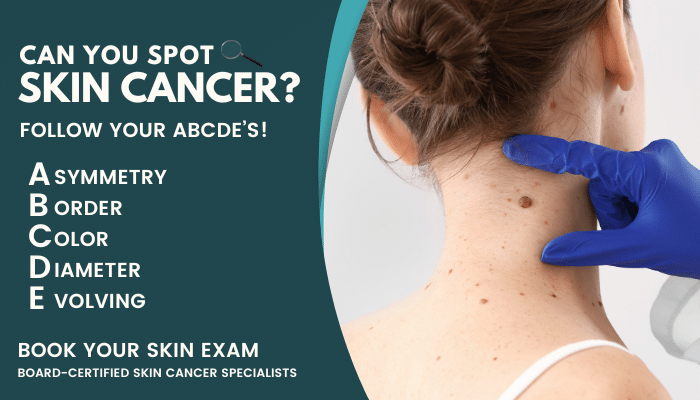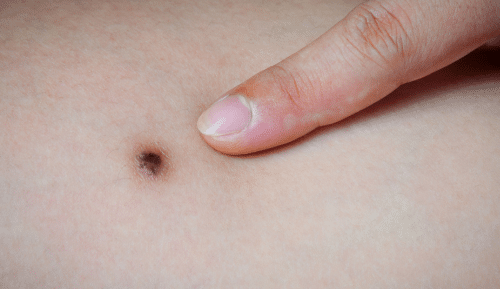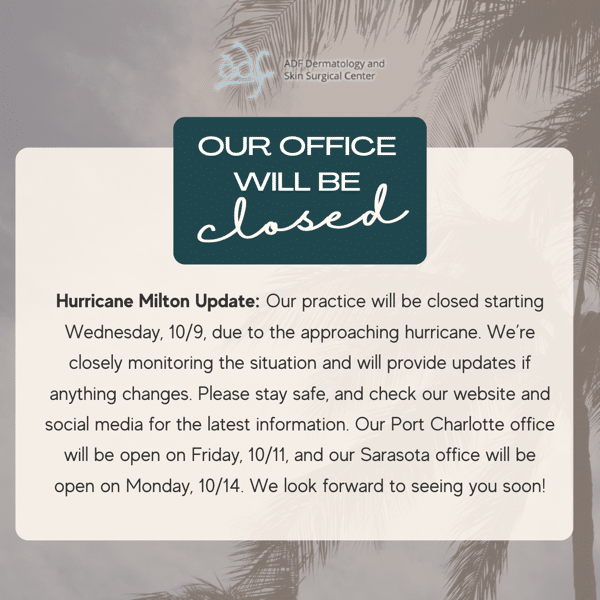Melanoma is a rare, but dangerous form of skin cancer that affects about 1% of the US population each year. The American Cancer Society predicts about 100,640 new cases will be diagnosed in 2024.
At ADF Dermatology, our skin cancer experts want you and your loved ones to stay safe and be informed about your melanoma risks and treatment options. This Melanoma and Skin Cancer Awareness Month, we’re breaking down everything you need to know about this form of skin cancer.
Why is Melanoma So Dangerous?
Melanoma is considered the most dangerous form of skin cancer because of its rapid growth and ability to spread to other parts of the body.
Unlike nonmelanoma forms of skin cancer like basal cell carcinoma (BCC) or squamous cell carcinoma (SCC), which tend to grow slowly and stay confined to the skin, melanoma can reach deep into the body, affecting your internal organs and other vital tissues. If this happens, complications may arise, including organ failure, irreversible damage, and death.
When caught quickly, melanoma is easily treated through both surgical and non-surgical means. In many cases, Mohs skin cancer removal surgery may be your best option to help ensure cancerous cells don’t spread to other parts of the body.

What are the Early Signs of Skin Cancer?
Early detection is vital for effective treatment and recovery from melanoma and all other types of skin cancer. Everyone should get a yearly skin cancer screening and conduct at-home self-exams to help catch any potential warning signs.
Remembering the ABCDEs of skin cancer detection could help save your life or the life of someone you love. Here’s what to look for:
A: Asymmetry: one side of the growth does not match the other
B: Border: irregular, ragged, notched, or blurred edges
C: Color: uneven color, typically brown, red, back, pink, white, or even blue
D: Diameter: the growth is more than 6 millimeters (about ¼ inch) across
E: Evolving: the growth changes in size, shape, or color
If you notice these signs or have any other reason to suspect a mole or lesion may be cancerous, schedule an appointment with a dermatologist at ADF Dermatology as soon as possible. Our skin cancer experts in Sarasota and Port Charlotte can perform any additional diagnostic testing necessary and provide the comprehensive, personalized care you need.
Where are the Most Common Places Melanoma Occurs on the Body?
Melanoma, like most types of skin cancer, is closely related to UV exposure and sun damage. Most commonly, melanoma is detected in areas of the body that get the most direct sun exposure. This includes:
- Face, especially the nose, cheeks, or ears
- Back and neck
- Shoulders
- Arms
- Legs
However, melanoma isn’t limited to these areas of the body. In some cases, it may develop in less common areas, such as:
- Palms of hands
- Soles of feet
- Beneath nails
- Inside the mouth or on other mucus membranes
- On or around the genitals
This is why a thorough annual skin exam performed by a skin cancer expert like Dr. Alfredo Fernandez is so important. With over 30 years of experience diagnosing and treating all forms of skin cancer, including melanomas, Dr. Fernandez can recognize even the earliest signs of potential trouble. Additionally, as a board-certified Mohs micrographic skin cancer surgeon, Dr. Fernandez can personally oversee your entire skin cancer recovery journey from start to finish for an uninterrupted continuum of care with a team you already know and trust.




